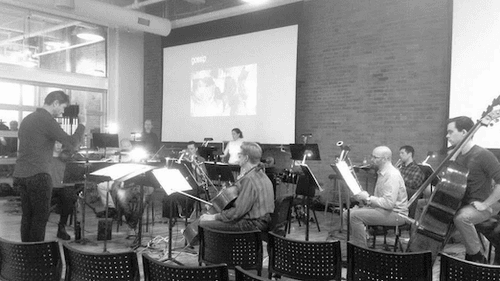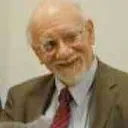Stay in the Loop
BSR publishes on a weekly schedule, with an email newsletter every Wednesday and Thursday morning. There’s no paywall, and subscribing is always free.
October inaugurals
Tempesta di Mare and Orchestra 2001 season openers

Tempesta di Mare and Orchestra 2001 both presented season openers that inaugurated new ventures. Tempesta di Mare presented the first concert in a season-long series based on Vivaldi’s The Four Seasons. Orchestra 2001 presented the first concert led by Jayce Ogren, the new artistic director who replaced founder James Freeman at the end of last season.
Autumnal flair and scare
The Four Seasons is a set of four violin concertos that are usually played together in a single program. Tempesta di Mare is presenting the concertos one at a time in concerts that include items related to them. The opening program embedded the "Autumn" concerto in a lineup that included a French ballet of the seasons and a cantata that added a touch of Halloween to the evening.
If the other programs on the schedule are as good as the first one, Tempesta’s audience can look forward to an enjoyable season. Tempesta’s Baroque instruments captured all the rustic hunting-and-harvestfest quality of the Vivaldi. The other instrumental pieces placed the concerto in the historic environment that shaped its style and subject matter. An overture by a Florentine composer seemed somewhat uninspired, but it was saved by some bright work with a pair of recorders.
The climax was a cantata that told the story of Medea, the mythological figure who responded to her husband’s infidelity by killing his new wife and both her children. The guest vocalist, soprano Marguerite Krull, fulfilled all the expectations evoked by a bio that includes a global roster of early-music appearances. Krull and the Tempesta di Mare musicians produced an unbroken intensity that turned Medea’s rage into a non-stop 18th-century ride of the Valkyries.
Getting physical
The title piece of the Orchestra 2001 program summed up the overall theme. Sebastian Curriers’s 2009 Bodymusic explores 16 physical states by mixing natural sounds with appropriate music. The first section, “Doors,” started with footsteps and an opening door followed by ominous music, more footsteps, and another opening. Another section, Quiet Time, combined soft music with barely audible breathing. The finale, “Nightbath,” supplemented soft, deep horn music with gurgling and splashing. Other sections covered chattering gossips, post-sex feelings, and the madness of a crowd.
The other three pieces on the program all had some relation to physical moves and rhythms. Joan Tower’s "Petroushskates" was inspired, in part, by the flowing motions of ice skaters. John Adams’s Son of Chamber Symphony was composed so it can be performed as a ballet as well as a concert piece. Derek Bermel’s Shifting Ties is based on Bulgarian folk music that features, according to the composer’s notes, “melodies in odd meters executed at lightning speeds.”
All the pieces on the program had their attractions. "Shifting Ties" is a short, high-speed ride with all the melodic and rhythmic variety the composer promised. Son of Chamber Symphony starts out with a bopping movement that reminded me of West Side Story but it develops into something more grown up by the end of its final movement. Bodyworks included entertaining sections like "Hiccups" and frighteners like the crescendo of the enraged crowd. My personal favorite, the Joan Tower quintet, created pictures and surprising mixtures of sound with five standard instruments, unaided by sound effects and images. If you give listeners the right notes, they’ll provide their own visuals.
Lightweight listening

James Freeman could have included all of these pieces in the programs he conducted during his 27 years he led Orchestra 2001. But he would have combined them with works that had more depth. When I look back at Freeman’s tenure, I think of the mystical Messiaen pieces he introduced to Philadelphia audiences and the premieres of substantial works like Andrea Clearfield’s 2007 Romanza for violin and chamber orchestra. I didn’t hear anything that weighty at this event.
I also missed the Philadelphia connection that played a major role in Orchestra 2001’s rise. Philadelphia hosts a number of good composers and Orchestra 2001 gave them one of their primary outlets. That may sound parochial, but foreign audiences seem to have shared Freeman’s opinion of their work when Orchestra 2001 went on tour.
Freeman built a unique organization with a devoted audience. His successors should study its strengths and keep them in mind as they take the organization into the future.
What, When, Where
Tempesta di Mare, A Chill in the Air: Vivaldi, Concerto in F Major, “Autumn." Collasse, The Ballet of the Four Seasons. Dall’Abaco, Concerto III for Several Instruments. Veracini, Overture VI in G minor. Clérambault, "Medea." Marguerite Krull, soprano. Tempesta di Mare Philadelphia Baroque Orchestra. Gwyn Roberts and Richard Stone, directors. Emlyn Ngai, concertmaster. October 22, 2016 at the American Philosophical Society, 427 Chestnut Street, Philadelphia. (215) 755-8776 or tempestadimare.org.
Orchestra 2001, Body Music: Bermel, "Shifting Ties." Adams, Son of Chamber Symphony. Currier, Bodyworks. Tower, "Petroushskates." Orchestra 2001, Jayce Ogren, conductor. October 28, 2016 at the Center for Architecture and Design, 1218 Arch Street, Philadelphia. (267) 687-6243 or orchestra2001.org.
Sign up for our newsletter
All of the week's new articles, all in one place. Sign up for the free weekly BSR newsletters, and don't miss a conversation.

 Tom Purdom
Tom Purdom